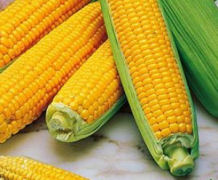Since seed coating with neonicotinoid insecticides was introduced in the late 1990s, European beekeepers have reported severe colony losses in the period of corn sowing (spring). As a consequence, seed-coating neonicotinoid insecticides that are used worldwide on corn crops have been blamed for honeybee decline. In this paper, a probable but so far underestimated route of environmental exposure of honeybees to and intoxication with neonicotinoid insecticides, namely, the atmospheric emission of particulate matter containing the insecticide by drilling machines, has been quantitatively studied. Experimental results show that the environmental release of particles containing neonicotinoids can produce high exposure levels for bees, with lethal effects compatible with colony losses phenomena observed by beekeepers.
Source: Andrea Tapparo et al. (2012) Environ. Sci. Technol (attached)
New research has linked springtime die-offs of honeybees critical for pollinating food crops — with technology for planting corn coated with insecticides. In the study, Andrea Tapparo and colleagues explain that seeds coated with so-called neonicotinoid insecticides went into wide use in Europe in the late 1990s. Almost immediately, beekeepers observed large die-offs of bees that seemed to coincide with mid-March to May corn planting. Scientists thought this might be due to particles of insecticide made airborne by the pneumatic drilling machines used for planting. These machines forcefully suck seeds in and expel a burst of air containing high concentrations of particles of the insecticide coating. In an effort to make the pneumatic drilling method safer, the scientists tested different types of insecticide coatings and seeding methods. They found, however, that all of the variations in seed coatings and planting methods killed honeybees that flew through the emission cloud of the seeding machine. One machine modified with a deflector to send the insecticide-laced air downwards still caused the death of more than 200 bees foraging in the field.
Source: Bits of Science, 14 March 2012
http://www.bitsofscience.org/neonicotinoid-insecticides-honeybee-ccd-52…
Newspaper articles:
http://www.dailymail.co.uk/news/article-2116263/Honeybee-deaths-Mystery…
http://www.bloomberg.com/news/2012-03-15/bee-deaths-linked-to-sowing-in…
http://www.inquisitr.com/206612/honey-bees-dying-from-corn-insecticides/
http://www.ibtimes.com/articles/315680/20120317/honeybee-death-insectic…
http://www.enewspf.com/latest-news/science-a-environmental/31235-bee-ex…

- Log in to post comments
